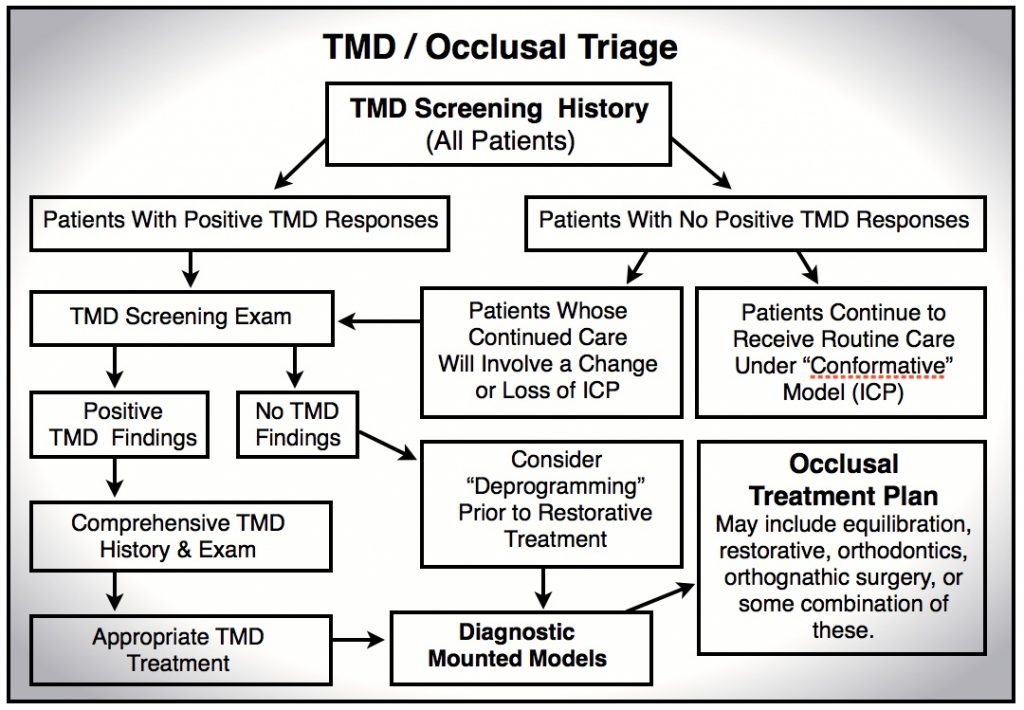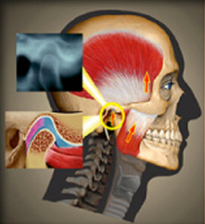Most dentists think of TMDs as a “pain” problem, since it is usually when a patient voices a complaint that it is brought to their attention. However, pain is not really the problem – pain is typically an expression of the actual problem, which is dysfunction. In the comprehensive management of TMDs, rather that just treating the symptoms, treating the dysfunction that is the source of the symptoms represents a true rehabilitative approach. This approach is intended to minimize the likelihood that the patient will have chronic recurrences of the problem that produced the symptoms. Fortunately, early diagnosis is often possible and acute episodes can often be anticipated and avoided by incorporating a screening protocol into a dental practice.
It is not surprising that dentists often don’t recognize a TMD in its early stages, before the patient has an acute episode that becomes impossible to ignore. As with caries, periodontal disease, and oral cancer, as well as many other diseases and disorders, identifying and treating these disorders in their incipient stage is the best assurance of a positive long-term prognosis. The early signs and symptoms of a TMD are often present and can easily be identified. Recognizing these incipient indicators requires only some minor procedural changes in office protocol and very little additional time on the part of the dentist.
As early as 1983, the American Dental Association recommended that ALL dentists screen ALL of their patients for TMDs. (1, 2) In addition, three other prominent dental organizations have also long advocated for TMD screening. (3, 4, 5) And yet, in my experience, few dentists have incorporated a TMD screening protocol into their practices.
That being the case, one has to wonder why making this change has not been more widely accepted by most dentists, particularly when it is such an easy process to incorporate into any practice. I strongly suspect that one of the reasons for this is that most dentists do not actually understand what is necessary to screen for TMDs. I will describe a screening protocol for TMDs that is very easy to incorporate into any dental practice.
In the screening protocol that follows, the starting point is to administer a short screening questionnaire at regular intervals, such as at initial intake and at each recall visit. By comparing the responses from visit to visit, changes in responses on the questionnaire may indicate the early signs of a developing TMD that should be addressed before it worsens. This is the key to recognizing TMDs in their incipient stage.
The forms mentioned for initiating a screening protocol can be downloaded
A TMD Screening Protocol (click to view)

This diagram defines how a TMD screening protocol would fit into a dental practice that chooses to provide comprehensive TMD management.
References:
- Clark GT: The President’s Conference on the Examination, Diagnosis, and Management of Temporomandibular Disorders, JADA 1983
- McNeill C, Mohl ND, Rugh JD, Tanaka TT: Temporomandibular disorders: diagnosis,management, education, and research JADA 1990; 120(3): 253, 55, 57
- Howard WW: Craniomandibular disorders: no one responsibility? Gen Dent 1987; 35(4): 260
- Okeson: Orofacial Pain Guidelines for Assessment, Diagnosis and Management. Quintessence 1993
- Tally RL et al: Standards for the History, Examination, Diagnosis and Treatment of TMD: A Position Paper. J Craniomandib Pact 1990; 8(1):60-77

